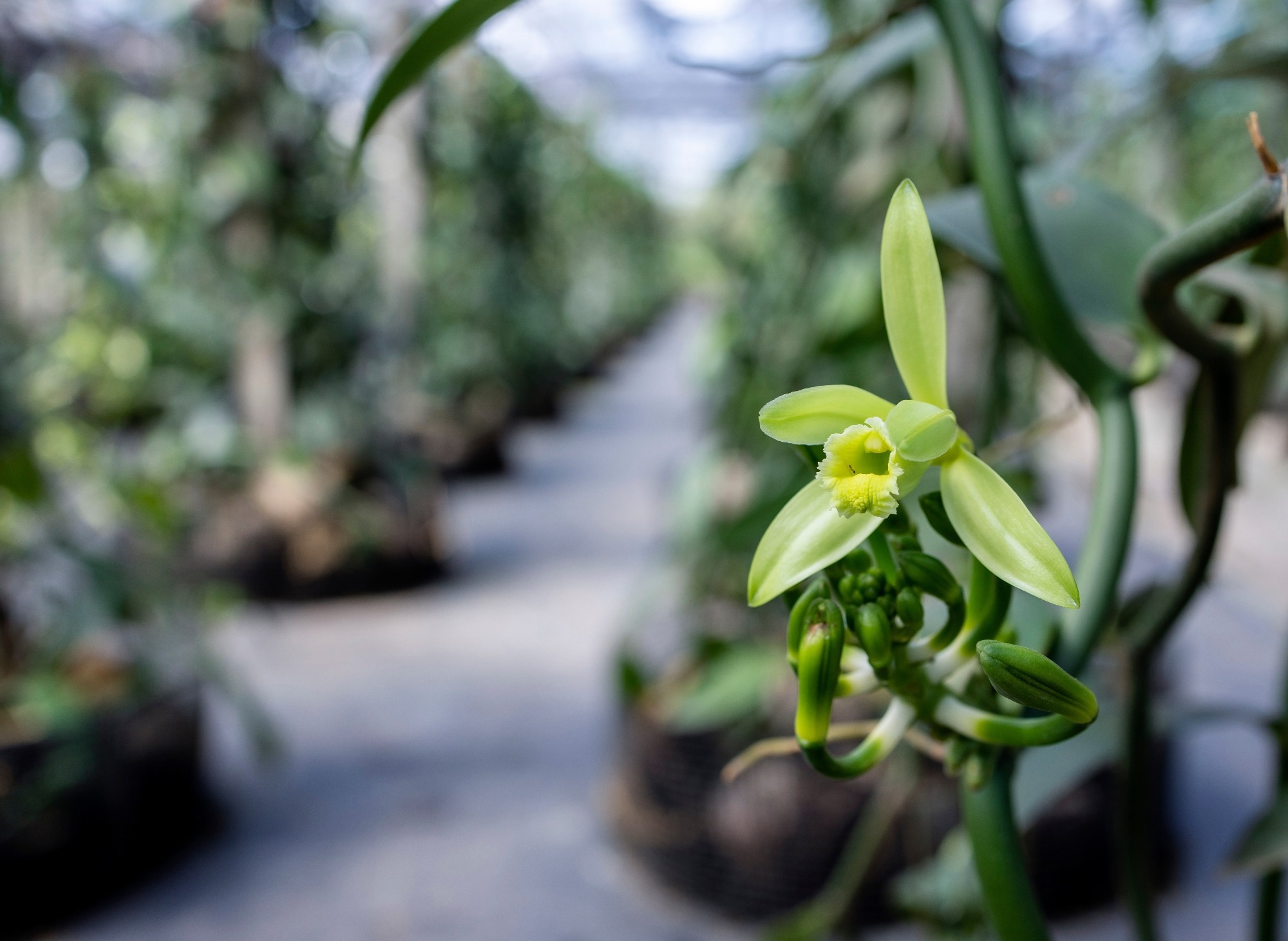 By Pooja Toshniwal PahariaReviewed by Lexie CornerJul 9 2025
By Pooja Toshniwal PahariaReviewed by Lexie CornerJul 9 2025A recent study published in Frontiers in Plant Science examines how climate change could affect the distribution, pollination, and habitat suitability of wild vanilla species.
Using species distribution models, the researchers projected that some vanilla species may see their suitable habitat shrink by 1 %–53 %, while others could expand their range by 11 %–140 %. However, all associated pollinator species are expected to lose habitat, with predicted declines ranging from 7 % to 71 %.
The study also found a significant drop in the geographic overlap between vanilla species and their pollinators, particularly for those that rely on a single pollinator species. These findings can help guide conservation priorities and inform strategies such as ex-situ conservation or assisted migration.

Image Credit: KAMONRAT/Shutterstock.com
Climate change can shift where vanilla species grow, disrupt interactions with other species, and affect their genetic diversity.
Wild relatives of vanilla (crop wild relatives or CWRs) are important for improving cultivated vanilla. Their survival depends on pollinators, which help transfer genes and spread beneficial traits. If pollinator relationships are disrupted, it could reduce reproduction and threaten long-term survival.
Climate change also makes vanilla species more vulnerable to environmental and biological stress, leading to lower yields worldwide. To meet the rising demand for natural vanilla, stronger cultivation systems are needed. Vanilla CWRs will be an important part of that effort.
About the Study
Researchers used modeling tools to predict how climate change could alter the abundance and habitat of vanilla species. They focused on the tropical Americas, which host more than half (62 out of 118) of the world’s vanilla species.
The team compiled georeferenced occurrence data for Neotropical vanilla species using the MaxEnt algorithm. They modeled changes in species distribution and range overlap between vanilla species and their pollinators by 2050 under two climate scenarios: SSP2-4.5 (moderate emissions with global cooperation) and SSP3-7.0 (higher emissions with less international coordination).
Pollinator data focused on Apidae bee species from the Neotropics. Sources included the Global Biodiversity Information Facility (GBIF) and other recent studies. Records from urban areas, oceans, and biodiversity institutions were excluded. After filtering, the analysis included 11 vanilla species (7 animal-pollinated and 4 self-pollinated), each with at least 30 occurrence points.
Environmental predictors such as precipitation and temperature were drawn from the WorldClim database. The researchers tested 15 model configurations using different feature combinations (linear, quadratic, hinge, product) and regularization multipliers (1, 3, and 5). They validated models using spatial block cross-validation, dividing the data into 100 km blocks across eight folds.
The World Database on Protected Areas (WDPA) was used to identify top-priority sites for in-situ conservation. The model also flagged areas likely to become unsuitable by 2050, indicating where ex-situ conservation or relocation may be needed.
Key Findings
Model results varied across vanilla species. Some are expected to lose suitable habitat by up to 53 %, while others may gain up to 140 %. For pollinators, however, all modeled species showed habitat loss, with the steepest declines—up to 71 %—predicted for Euglossa bees under the SSP3-7.0 scenario.
By 2050, the geographic overlap between vanilla plants and their pollinators is expected to shrink. The most severe mismatches—up to 90 %—were predicted for species dependent on a single pollinator, such as V. trigonocarpa and V. planifolia. Other species expected to experience reduced overlap include V. pompona and V. hartii. Without conservation action, overlap within protected areas will also decline.
Precipitation factors—such as annual totals, seasonality, and the driest month—were the most influential in predicting species distribution. Temperature-related variables, including annual range and the coldest month's low, were key to identifying suitable habitats. Pollinator distributions were influenced by average annual temperature, cold season metrics, and diurnal range.
The study suggests that climate change could increase habitat fragmentation for wild vanilla species, impacting pollination and gene flow. Some self-pollinating species (V. chamissonis, V. mexicana, and V. bicolor) may benefit from improved habitat conditions by 2050. However, understanding how climate change affects pollen viability, foraging behavior, and reproduction will be essential to predicting long-term outcomes for vanilla populations.
Download your PDF copy now!
Journal Reference
Watteyn, C, et al. 2025. Wild Vanilla and pollinators at risk of spatial mismatch in a changing climate. Front. Plant Sci., 16, 1585540, DOI: 10.3389/fpls.2025.1585540, https://www.frontiersin.org/journals/plant-science/articles/10.3389/fpls.2025.1585540/full